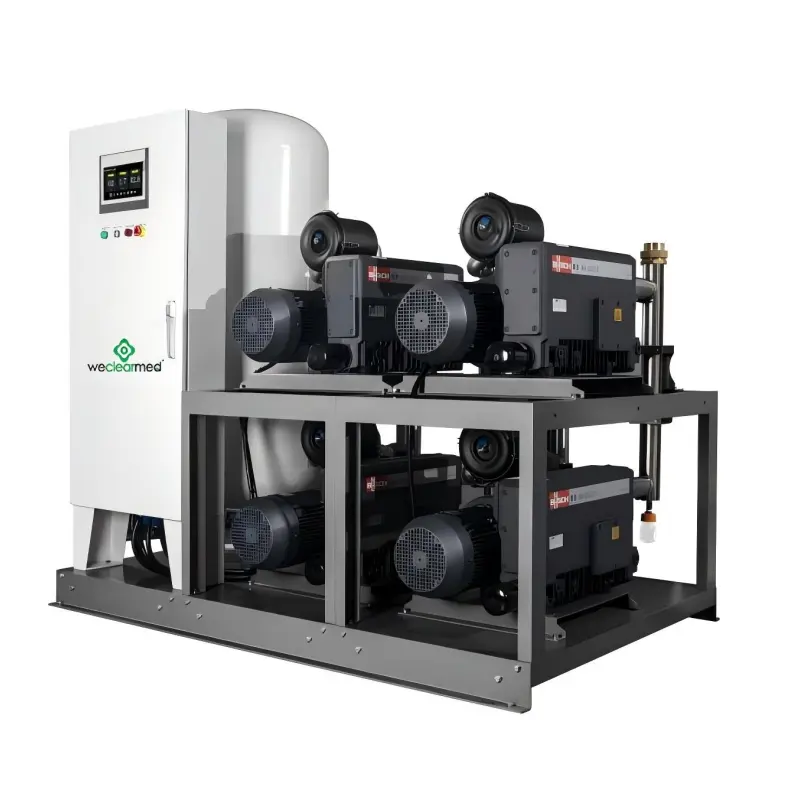What new performance challenges and solutions does the advanced process pose to VAC Units?
2025-09-28
Table of Contents
-
Introduction: The Demands of Advanced Manufacturing
-
Key Performance Challenges for VAC Units
-
Engineering Solutions: A Technical Breakdown of Next-Gen VAC Units
-
Product Parameter Showcase
-
Frequently Asked Questions (FAQ)
1. Introduction: The Demands of Advanced Manufacturing
Advanced manufacturing processes, such as high-speed automation, precision laser cutting, and nano-fabrication, represent the pinnacle of industrial efficiency. However, these gains in productivity and precision come with a significant cost: the generation of complex, hazardous, and often high-temperature contaminants. Traditional filtration systems, designed for older industrial environments, are frequently overwhelmed by these new demands. This reality poses critical performance challenges for Vacuum Air Cleaner (VAC) Units, pushing their operational limits and requiring a fundamental evolution in their design and technology.
2. Key Performance Challenges for VAC Units
Modern industrial settings subject VAC Units to stressors far beyond their original design parameters. The primary challenges include:
-
Thermal Load and High-Temperature Particulates: Processes like plasma cutting or welding generate not just fine metallic fumes but also super-heated particles. These can degrade standard filter media, melt plastic components, and pose a severe fire risk within the filtration system itself.
-
Sub-Micron and Hazardous Contaminants: Advanced processes create ultrafine dust and fumes, often smaller than 1 micron. These particles can bypass standard filters, reducing air quality and carrying health hazards. Furthermore, contaminants may include toxic or carcinogenic materials, demanding absolute capture and safe containment.
-
Chemical and Oil Mist Corrosion: In CNC machining and similar applications, VAC Units must handle a mixture of fine particulate and oily or chemical-laden mist. This combination can clog filters rapidly, corrode internal components, and create a hazardous sludge that is difficult to dispose of.
-
Continuous Operational Duty Cycles: Unlike batch processing, many advanced lines run 24/7. This requires VAC Units to maintain consistent suction power and filtration efficiency without frequent downtime for maintenance or filter changes.
3. Engineering Solutions: A Technical Breakdown of Next-Gen VAC Units
To overcome these hurdles, the latest generation of industrial VAC Units incorporates sophisticated engineering solutions. These are not incremental improvements but foundational upgrades that ensure reliability, safety, and efficiency in demanding environments.
The core advancements are multi-layered:
-
Advanced Filtration Cascade: Modern systems employ a multi-stage approach.
-
Primary Stage: A cyclone separator or pre-filter captures larger debris, protecting the main filters from premature wear.
-
Main Filtration: A primary cartridge filter, often with a nanofiber coating, captures particles down to 1-5 microns with high efficiency.
-
Final Safety Stage: A certified HEPA/ULPA filter guarantees the capture of sub-micron and hazardous particles, ensuring exhaust air meets the strictest safety standards.
-
-
Thermal and Corrosion Resistance: Critical components, including fan housings and filter casings, are constructed from powder-coated steel or stainless steel to resist heat, abrasion, and chemical corrosion. Heat-resistant gaskets and seals prevent failure under thermal stress.
-
Intelligent Control Systems: Integrated PLCs (Programmable Logic Controllers) and sensors provide real-time monitoring of pressure drop across filters, motor temperature, and air flow. This allows for predictive maintenance, preventing unexpected downtime and optimizing filter life.
4. Product Parameter Showcase
The following specifications highlight the capabilities of our high-performance VAC Units designed explicitly for advanced industrial processes.
Key Features List:
-
Three-Stage Filtration System: Pre-separator, Primary Cartridge Filter, and H14 HEPA Safety Filter.
-
Auto-Cleaning Mechanism: Pulse-jet technology automatically cleans the primary filters, maintaining stable suction power.
-
Thermally Protected Motor: Class F or H insulation rated for continuous duty in high-ambient temperatures.
-
Spark Arrestor & Anti-Static Options: Integrated safety features for explosive or flammable dust environments.
-
Centralized Control Interface: Touchscreen PLC with remote monitoring capabilities and data logging.
Technical Specifications Table:
| Parameter | Standard Model (VAC-5000H) | Heavy-Duty Model (VAC-7500HD) |
|---|---|---|
| Air Volume (CFM) | 1,250 | 2,200 |
| Maximum Static Pressure (in. w.g.) | 12.5 | 16.8 |
| Motor Power (HP) | 10 | 20 |
| Primary Filter Area (sq. ft.) | 215 | 430 |
| Final Filter Efficiency | H14 HEPA (99.995% @ 0.3µm) | H14 HEPA (99.995% @ 0.3µm) |
| Filter Cleaning | Manual Shaker | Fully Automatic Pulse-Jet |
| Max. Inlet Air Temperature | 158°F (70°C) | 212°F (100°C) |
| Construction Material | Powder-Coated Steel | 304 Stainless Steel |
| Noise Level (dB(A)) | < 70 | < 72 |
These robust specifications ensure that our VAC Units are not just adequate but are optimally engineered to handle the severe conditions of today's most advanced manufacturing floors.
5. Frequently Asked Questions (FAQ)
Q1: How do your VAC Units handle hot sparks from welding or cutting processes?
Our heavy-duty VAC Units are equipped with an integrated spark arrestor at the inlet, which extinguishes sparks before they enter the main filtration chamber. Combined with fire-retardant filter media, this significantly reduces the risk of internal fires.
Q2: What is the recommended maintenance schedule for these advanced VAC Units?
Maintenance intervals depend heavily on the specific application and contaminant load. However, the intelligent control system is the key. It monitors the pressure drop and will alert operators when filter cleaning is required or when a filter change is imminent, moving from a fixed schedule to predictive, condition-based maintenance.
Q3: Can your systems be configured for specific hazardous materials like carcinogenic dust?
Absolutely. For hazardous materials, we configure the VAC Units as a closed-loop system. This includes using absolute HEPA or ULPA filters, ensuring all seals are leak-tight, and providing safe-change filter housings that allow for filter disposal without operator exposure to the captured contaminants.
If you are very interested in our company's products or have any questions, please feel free to contact us.



